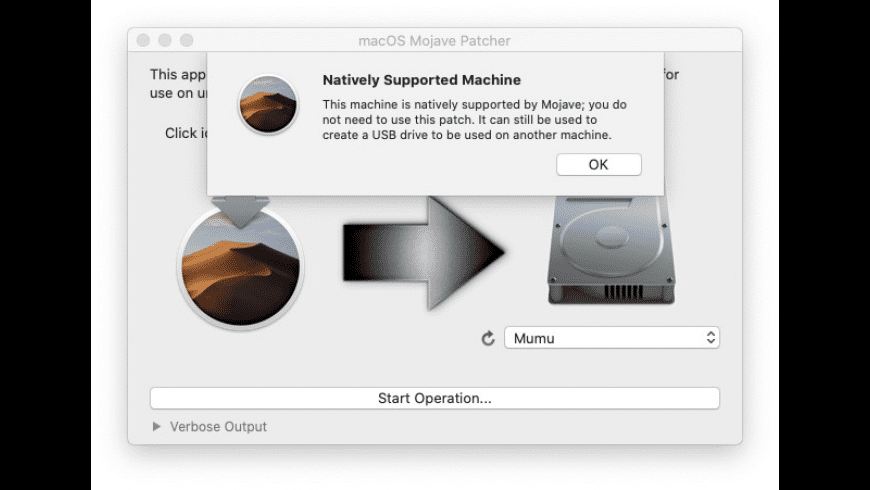Updates
Today I will tell you how to install macOS Mojave or other fresh macOS on an unsupported Mac using the Mojave Patcher Tool. This utility is available for free. You can see more information and patcher updates here on a dosdude site. You carry out all actions with the computer and the program at your own peril and risk! Next, launch the macOS Mojave Patcher tool and browse for macOS Mojave Installer application. Post selecting the macOS Mojave Installer application, the Patcher tool will successfully verify the application. MacOS Mojave Patcher is an application that lets you install and run macOS 10.14 on unsupported hardware.
Mojave Patcher allows you to create a custom Mojave installer disk for installing Mojave on a unsupported Mac. It is available here. There is also a list of Macs that it works with, so check that out first. It includes a list of known bugs, which is not necessarily complete (see below regarding my own experience).
Important Notes:- Using APFS is REQUIRED in Mojave in order to receive system updates via the normal Software Update method. If you choose to continue using macOS Extended (Journaled) as your filesystem type, you will NOT receive System Updates via System Preferences. If you are not using APFS, you can follow the 10.14.1 installation steps below.
- After applying ANY system update via Software Update, re-applying post-install patches using your Mojave Patcher installer volume will most likely be necessary. If you install a software update and the system fails to boot afterwards, this is what needs to be done.
10.14.6
10.14.6 can be updated normally via Software Update if using an APFS volume, and will need to be patched using an installer volume created with Mojave Patcher version 1.3.2 or later after installing.
Patcher Tool Download

10.14.5
10.14.5 can be updated normally via Software Update if using an APFS volume, and will need to be patched using an installer volume created with Mojave Patcher version 1.3.1 or later after installing.
10.14.4
10.14.4 adds new changes that ARE NOT patchable by the post-install tool of Mojave Patcher v1.2.3 and older! Before updating to 10.14.4, you you will need to use the latest Mojave Patcher version to create a new installer volume, using the 10.14.4 installer app. Then, update to 10.14.4, either by installing via Software Update, or by just using the installer volume you've created to install.


10.14.3
If you are currently running 10.14.1 or 10.14.2, you can simply use the Software Update pane of System Preferences (if using APFS) to apply the 10.14.3 update. Once the update is installed, you will most likely need to re-apply post-install patches to get the system to boot again. This process is detailed in steps 8 - 10 above. If you are currently running 10.14.0, you'll need to proceed with the 10.14.1 update method described below.
10.14.2
If you are currently running 10.14.1, you can simply use the Software Update pane of System Preferences (if using APFS) to apply the 10.14.2 update. Once the update is installed, you will most likely need to re-apply post-install patches to get the system to boot again. This process is detailed in steps 8 - 10 above. If you are currently running 10.14.0, or are using a non-AFPS volume, you'll need to proceed with the 10.14.1 update method described below.
Macos Mojave Patcher Tool For Unsupported Macs Windows 10
10.14.1/macOS Extended (Journaled) volumes
Macos Mojave Patcher Tool For Unsupported Macs Version

Macos Mojave Patcher Tool For Unsupported Macs Version
The Mojave 10.14.1 update does NOT install properly on unsupported machines, and could result in an unbootable OS. If you want to install the 10.14.1 update (and are not currently running 10.14.1), perform the following steps:
• Download the latest version of Mojave Patcher
• Download the installer using the Tools menu of Mojave Patcher
• Create a patched USB installer
• Boot from that, and install 10.14.1 onto the volume containing an older release.
• Once done, apply the post-install patches, and you should now be on 10.14.1.